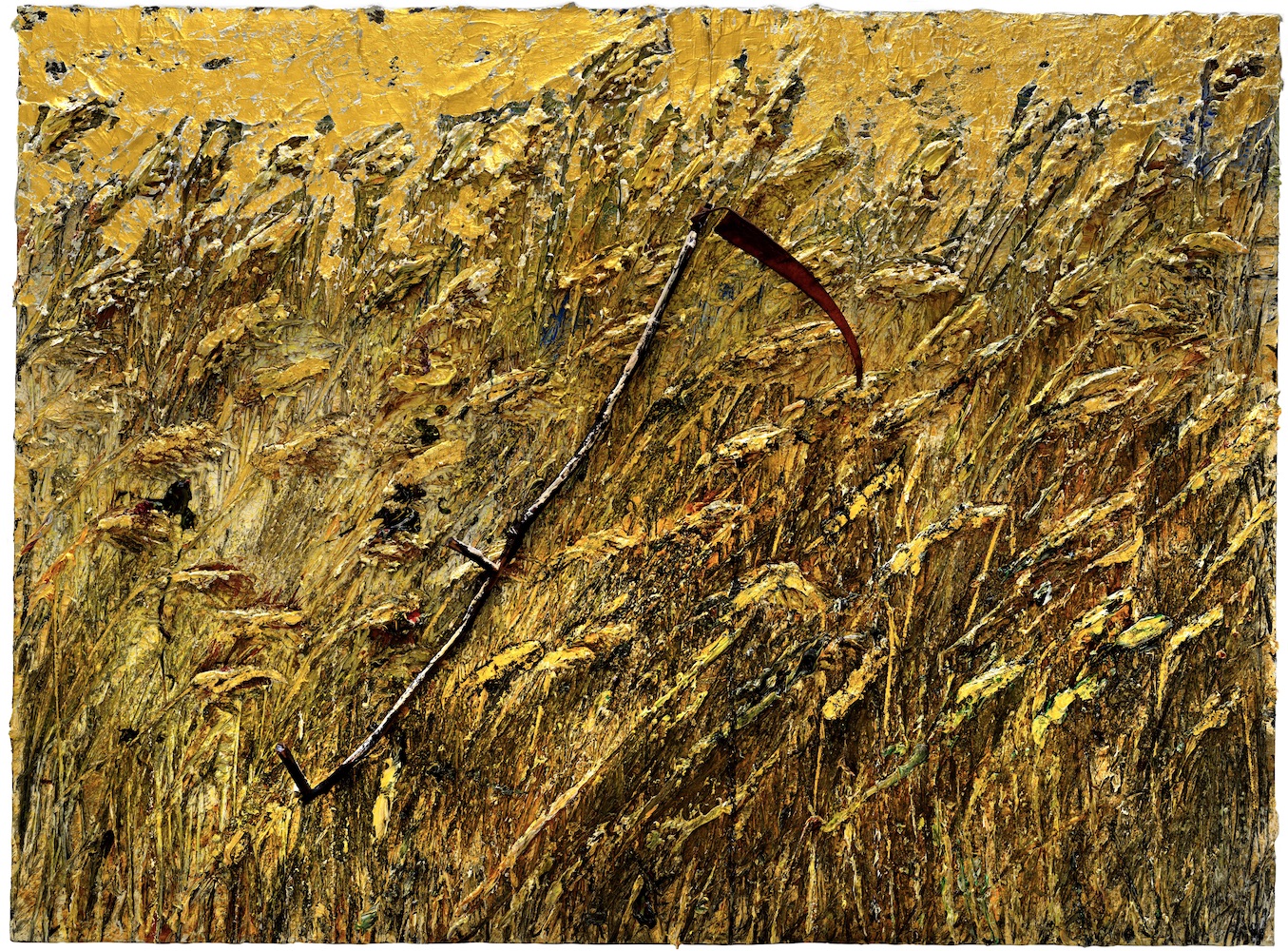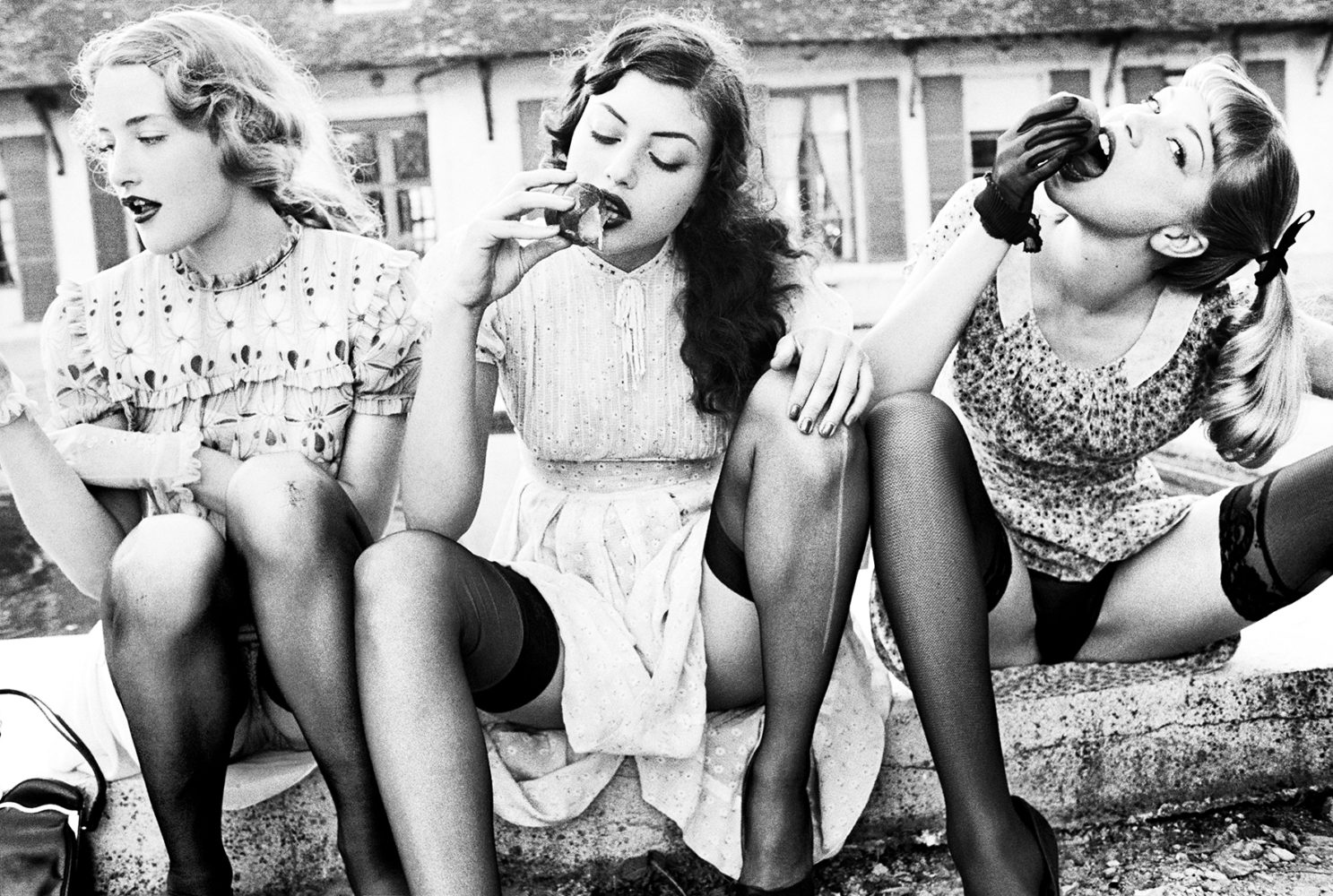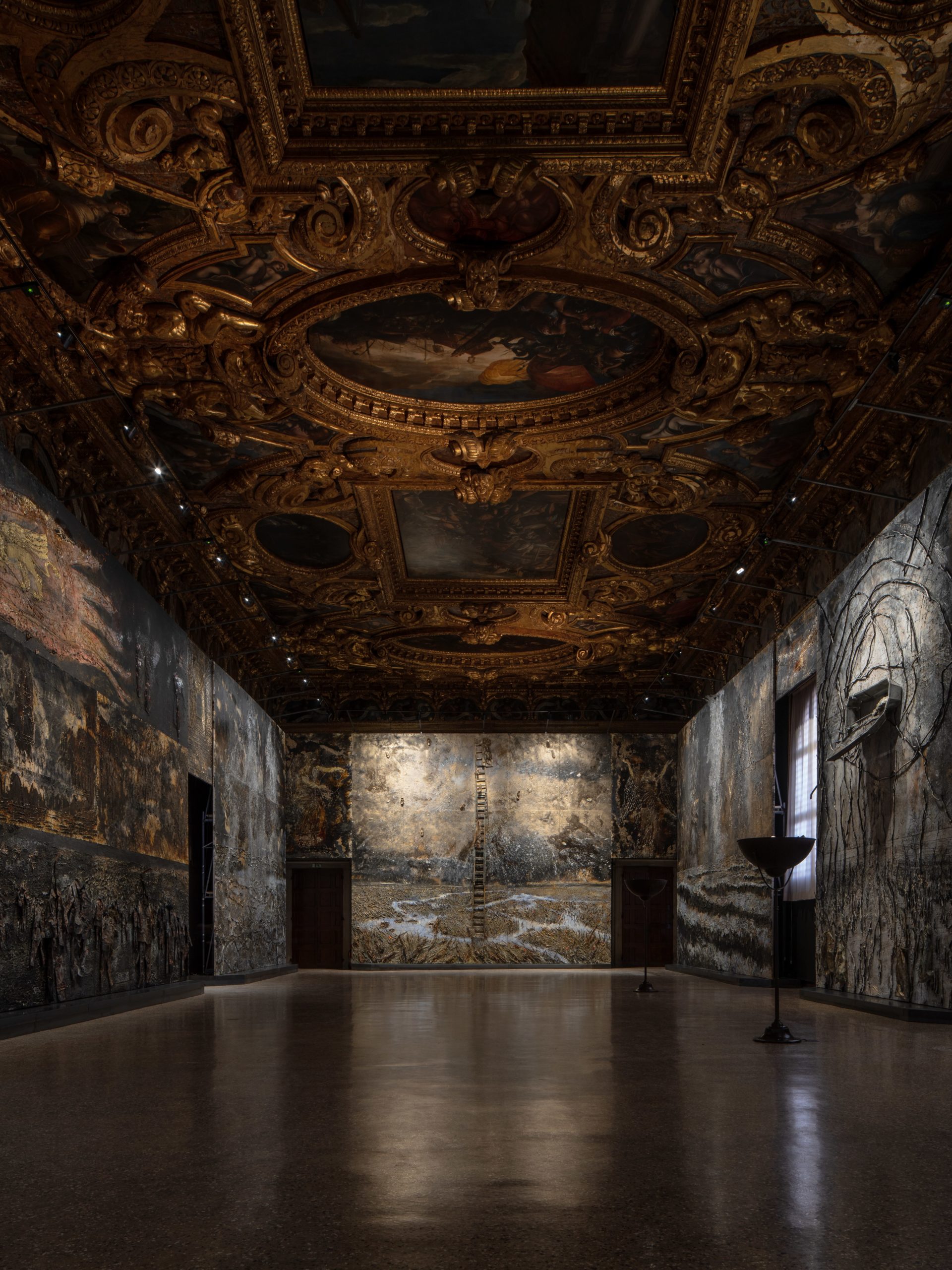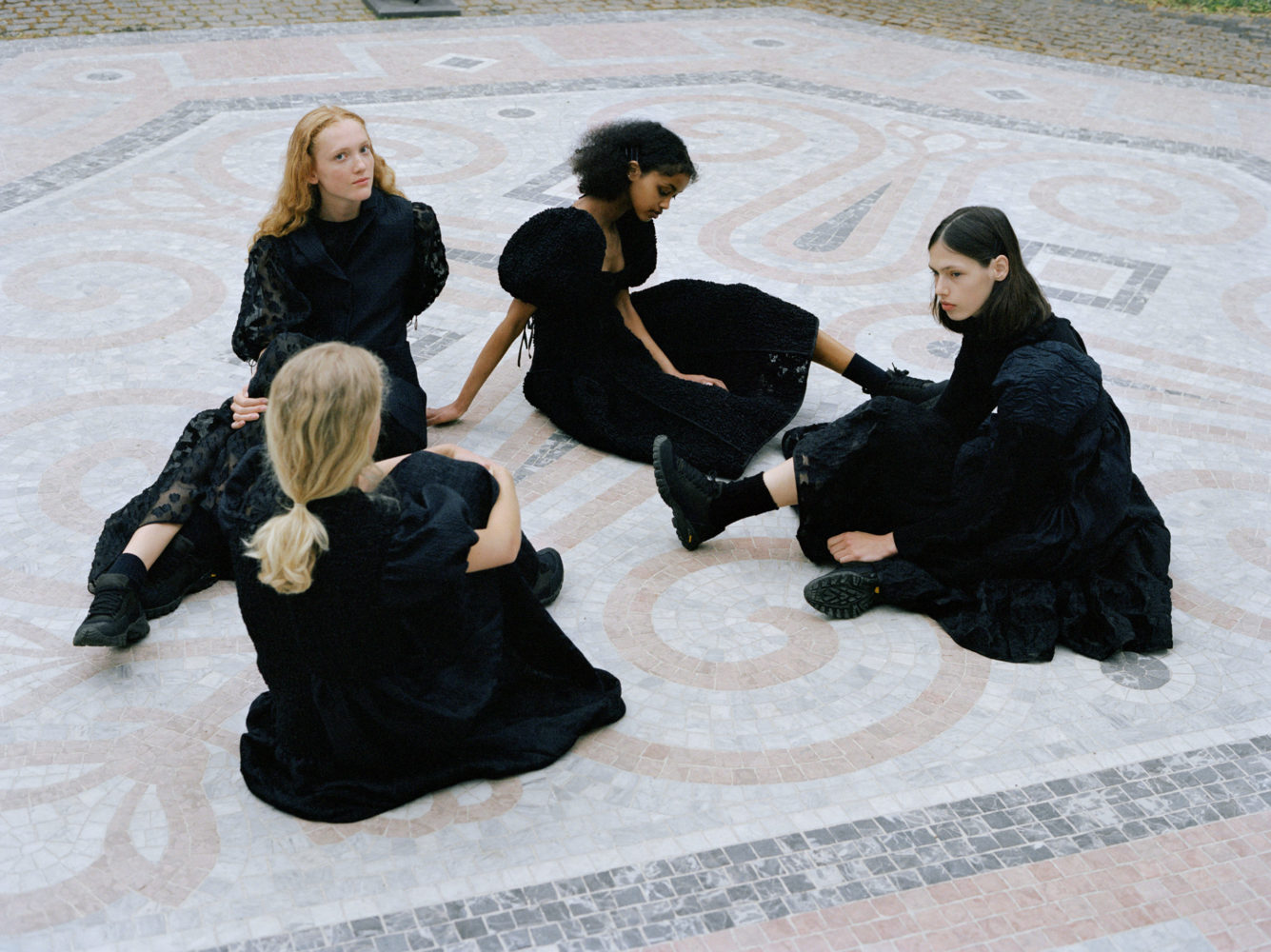An endless field of golden wheat glows against a setting sun, the horizon punctuated by a dozen scythes, their blades the color of rust. Ein Wort von Sensen gesprochen (One Word Spoken by Scythes, 2019–20) is one of the new paintings by Anselm Kiefer on view at Gagosian’s Le Bourget location in “Field of the Cloth of Gold.”
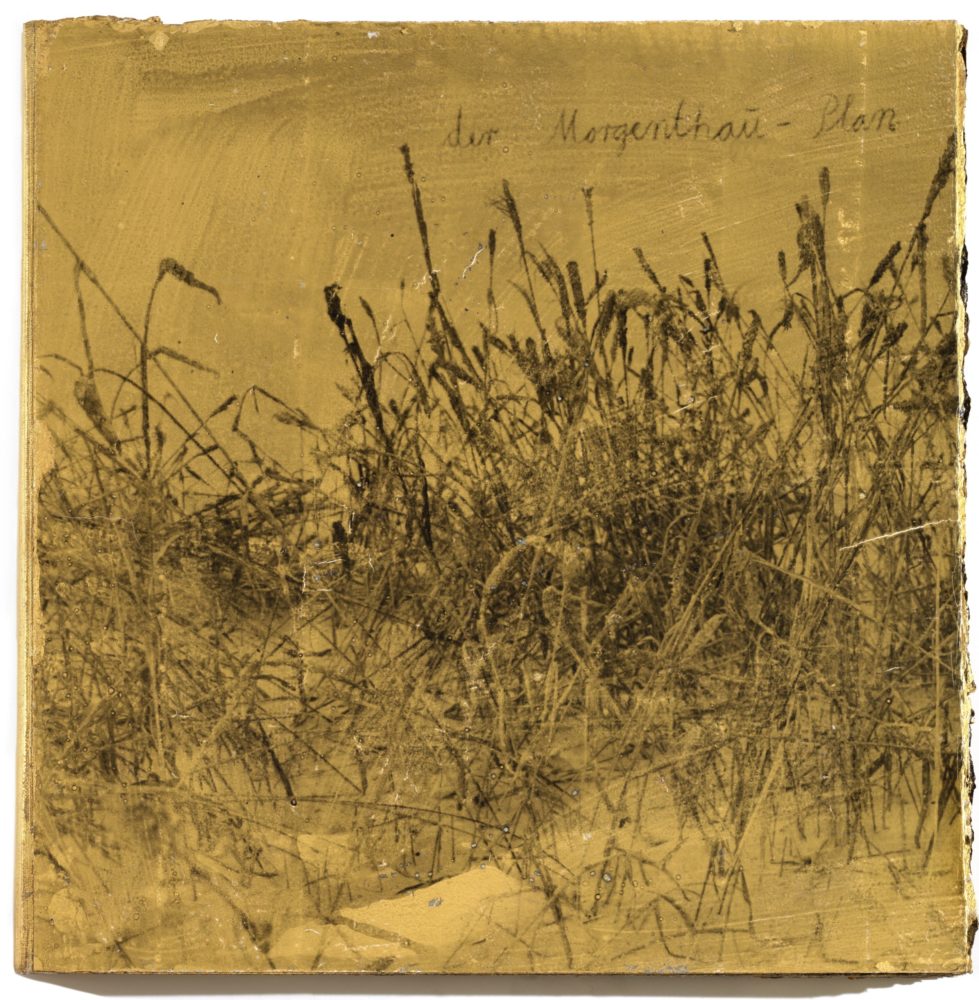
Anselm Kiefer, “der Morgenthau-Plan,” 2019, silver gelatin emulsion on gold leaf, paper, and cardboard, with canvas binding, 55 x 53 x 4.5 cm, photo by Georges Poncet, © Anselm Kiefer, courtesy of Gagosian.
The exhibition’s title refers to the 16th-century summit between France and England, but as the artist told Whitewall recently, the allusion should not be read into too much. Kiefer, whose sweeping paintings of desolate landscapes incorporate materials like wheat, gold leaf, ash, and lead, describes his process as one of constant beginning and destruction, acknowledging the connection between nothingness and existence. For him, a work is never finished.
Kiefer calls upon memory, photographs, history, philosophy, and poetry—the latter for him being the world itself, in opposition to the illusion of reality. Whitewall spoke with the artist about language’s ability to uplift and about the role of making books and watercolors in his practice.
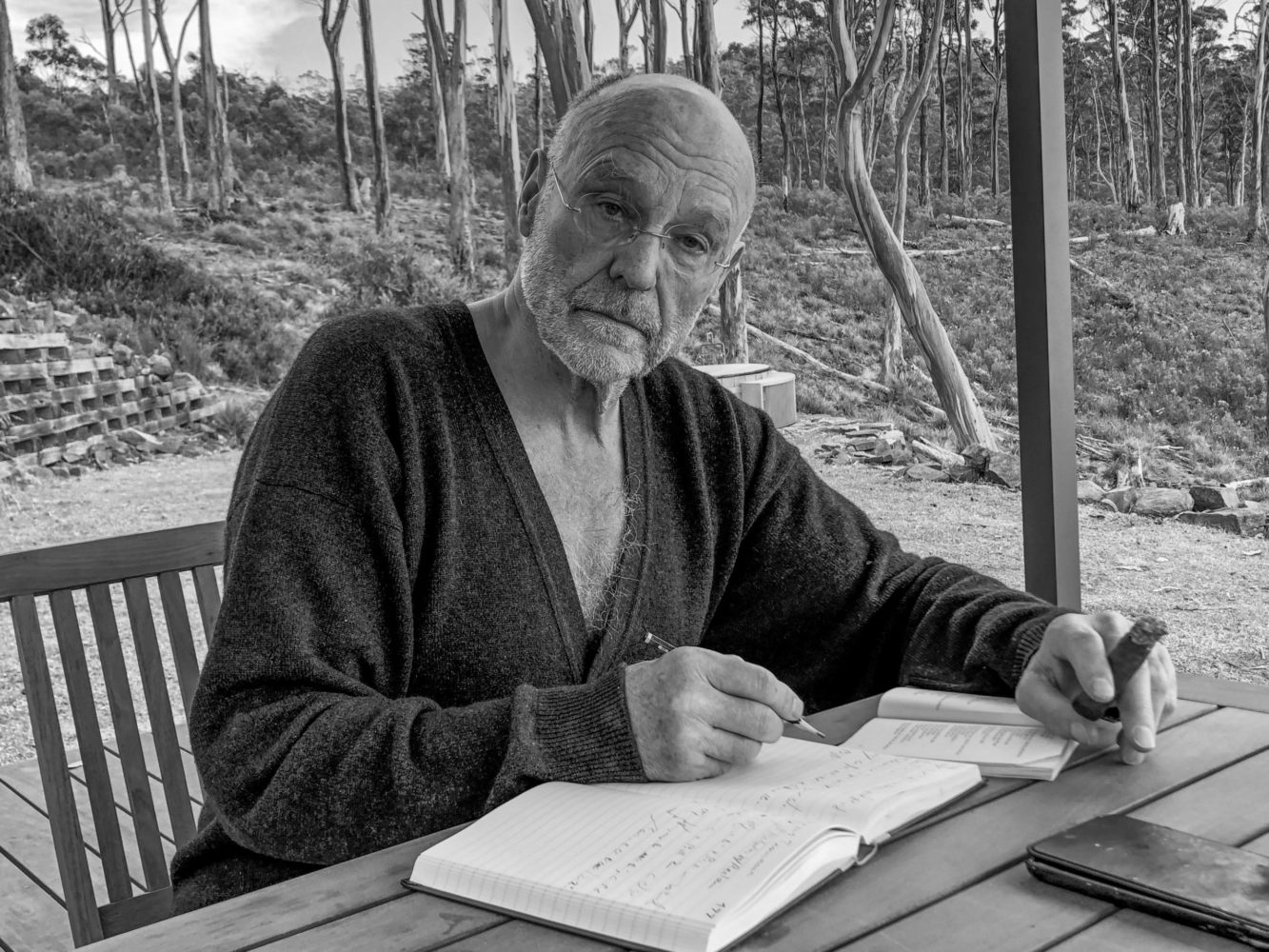
Portrait by Manuela Lucà-Dazio, 2019, © Anselm Kiefer, courtesy of Gagosian.
WHITEWALL: Was there a starting point for the new works selected for the exhibition “Field of the Cloth of Gold”?
ANSELM KIEFER: The starting points are very different. It can be a shock triggered by a poem, a special landscape, an experience. Or an object from my “arsenal” that suddenly catches my eye and brings up many associations. My arsenal corresponds to the synapses in my brain. I go for a walk in my brain and it sparks up all the time.
The title of the exhibition “Field of the Cloth of Gold” was not conceived at the beginning. The title is often not the explanation of the picture, but is more so its opposite, an allusion or a reference to a minor detail.
WW: How did you arrive at the historic moment as a point of reference for this show and its title?
AK: History often plays an important role in this context. For me, history is not a given, not a true thing; it is material, like clay for the sculptor or color for the painter.
WW: What is the process like working with materials such as straw, gold leaf, wood, and metal in pieces like Ein Wort von Sensen gesprochen and die Sieben Schalen des Zorns?
AK: Materials like straw, lead, et cetera are not objects that, in the sense of Plato, only come to life through ideas. They already have the spirit within them, which I discover, which I filter out. This is what happened to me a long time ago with lead, for example. In my studio at that time in Hornbach, the sewerage system was broken. The plumber removed the lead pipes and replaced them with a more modern material. I was fascinated by the dull shine of the lead, its flexibility, its easy transformation from one state to another (it can be melted even by low heat). The plumber showed me how to process it, solder it, et cetera, and then I started to make sculptures. I found out the reason for my fascination for lead afterwards with the help of books on alchemy.
The straw fascinated me because of the poem “Death Fugue” by Paul Celan, which I had already read in school. Your golden hair Margarete. In Hornbach, where my first studio was located, I took many photos of the billowing grain fields, which I still use as references today. Then I added the final product of the straw dung: ashes. The ash from the cow dung has a very special color, and I work a lot with this.
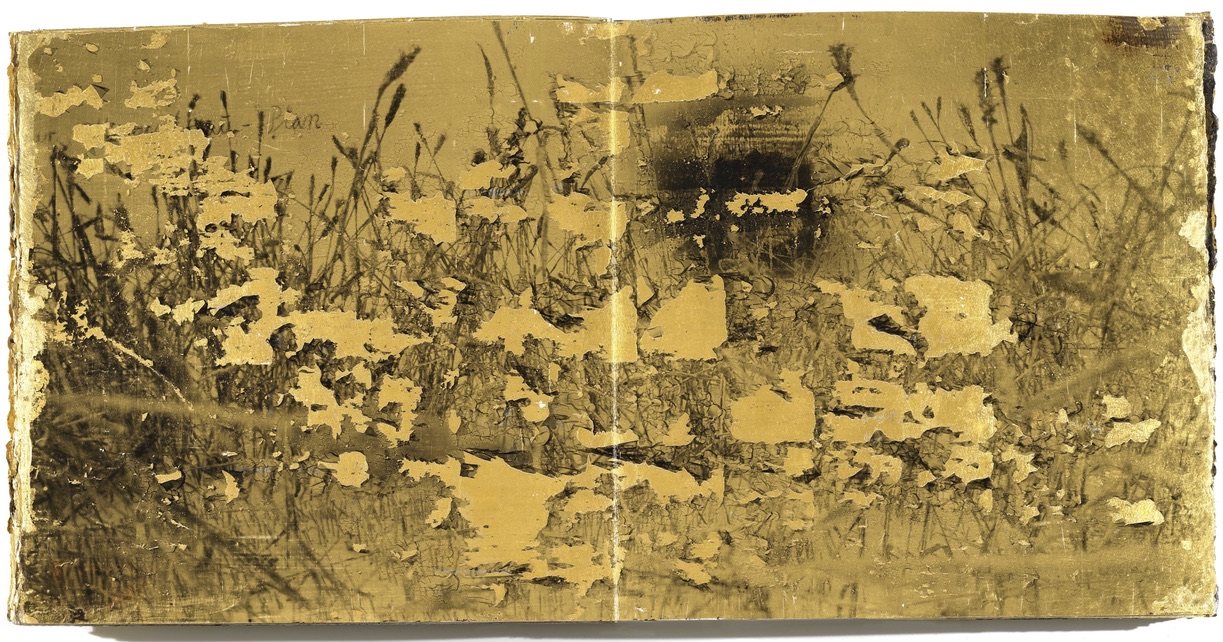
Anselm Kiefer, “der Morgenthau-Plan,” 2019, silver gelatin emulsion on gold leaf, paper, and cardboard, with canvas binding, 55 x 109 cm, pictured double-page 14–15, photo by Georges Poncet, © Anselm Kiefer, courtesy of Gagosian.
WW: What do the scythes (of which there are many) in Ein Wort von Sensen gesprochen symbolize to you?
AK: “Out of hearts and brains sprout the blades of night and a word, spoken by scythes, bends them into life . . . Oh stalks, you stalks, you stalks of the night”—Paul Celan, Aus Herzen und Hirnen, 1951.
There is no symbol; it is not that the word has a certain meaning. The poem is not “explainable.”
Language is not there to signify something, but to uplift a whole other world. Poems are not just another world, but the world itself, as opposed to everything that surrounds us—for all this is only illusion.
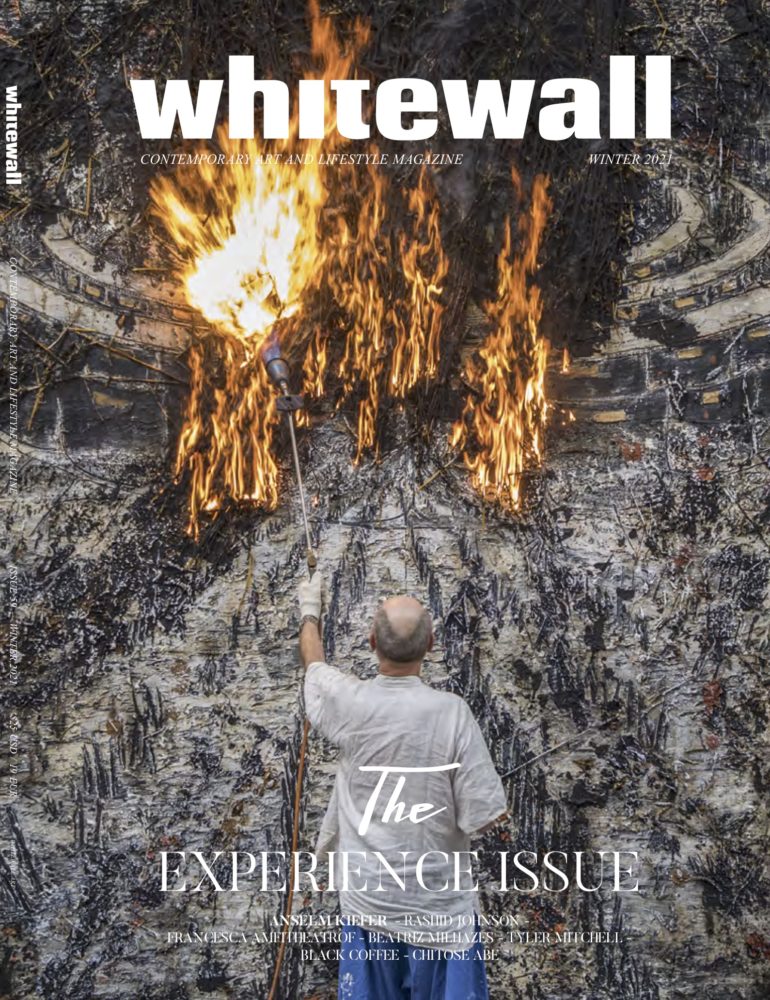
Photo Atelier Anselm Kiefer, 2019, © Anselm Kiefer, Courtesy of Gagosian
WW: The exhibition will take place at Gagosian gallery’s Le Bourget location, which you inaugurated in 2012 with the show “Morgenthau Plan,” filling the space with a sculpture of a golden wheat field. Do you see these new works as a continuation on that theme?
AK: Certainly. There is always a continuation, especially with this work.
WW: The show was postponed due to COVID-19. I wonder if you see the works taking on a new light in meaning given our new reality of a global pandemic?
AK: The pictures shown at the gallery in Le Bourget were made before the coronavirus. Throughout history we are witness to permanent states of conflicts and crises. Neither these nor the pictures that were made during the corona period and those which will be made after it will have anything to do with the event.
WW: How have the past several months impacted your time in the studio? Your overall process?
AK: My studio here is located between two highways, and during the lockdown everything suddenly stopped; it was very silent. During the time when everything had come to a standstill, I wondered whether it would be possible to pause from time to time in order to think about what one was doing. People often consume needlessly. This may sound cynical to you, but I was once very poor—I didn’t have two nickels to rub together—so I know how to get by without consuming much. Of course, I also know about the economic consequences of such a standstill, but we should consider how to escape these “compartmentalized constraints.” One possibility would be to have a basic income that would ensure everyone’s well-being.
WW: You’ve said, “I don’t construct ruins, but I feel ruins are moments when things show themselves. A ruin is not a catastrophe. It is the moment when things can start again.” How do you see your work in relationship to ruins?
AK: As an artist I am an iconoclast. For me, being and nothingness exist at the same time. There is no chronology. When I start a painting, I already am aware of its negation. I already know that I will destroy the painting. In the beginning it is already the complete real presence of the non-existing self.
WW: You’ve described your process as one of destroying and redoing. At what point in that cycle does a work feel finished?
AK: The work is never finished.
WW: How do you see your process in relationship to the concepts of philosopher Andrea Emo?
AK: I discovered the work of the philosopher Andrea Emo four years ago. I was very surprised, really perplexed, how his philosophy seemed to be a guide for my work. My “method” of constantly destroying and resurrecting images, which I have been practicing for over fifty years now, the awareness that nothingness and existence are not opposed to each other but are connected to each other in a continuous rhythm—all this not only made me understand Andrea Emo’s philosophy immediately, but it was as if he had always worked with me.
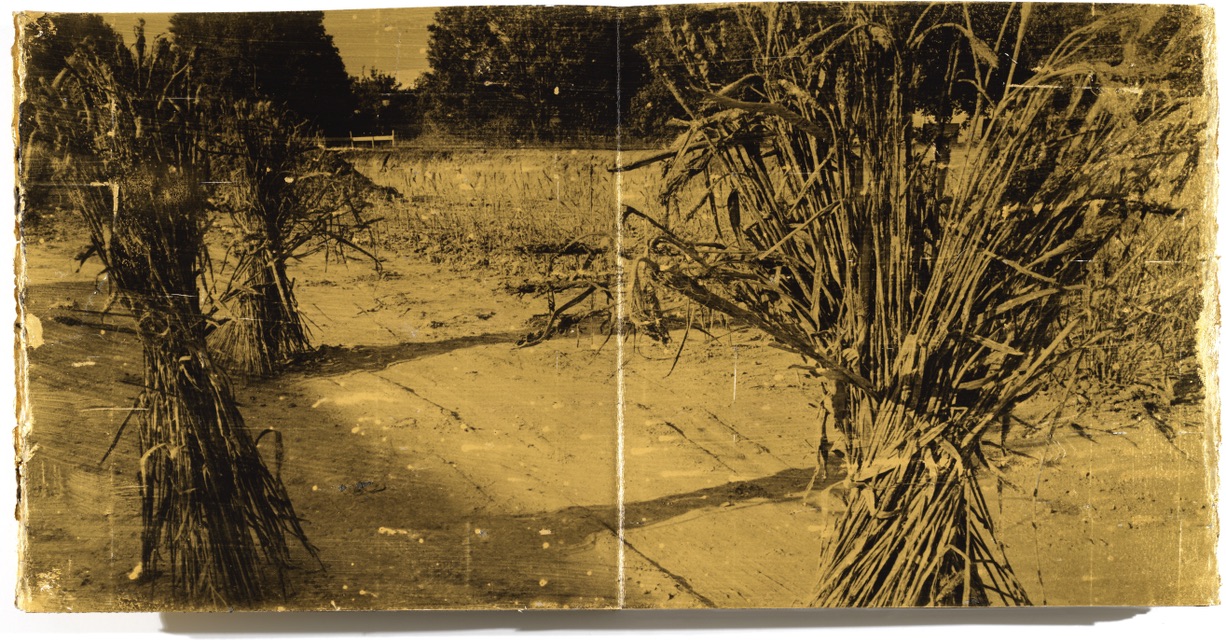
Anselm Kiefer, “der Morgenthau-Plan,” 2019, silver gelatin emulsion on gold leaf, paper, and cardboard, with canvas binding, 55 x 109 cm, pictured double-page 6–7, photo by Georges Poncet, © Anselm Kiefer, courtesy of Gagosian.
WW: Are the books you work on a daily practice?
AK: I spend about 60 percent of my time on small-scale, intimate books. I work on books and paintings at the same time.
WW: You’ve said before that when you were younger, you questioned if you wanted to be a writer or a painter. Are your books an answer to combine those two inclinations?
AK: I started writing very early. At the age of 17 I won a prize for my writing. And two years later Walter Jens (at that time something like a literary pope in Germany) wrote me an encouraging letter with the prospect of publishing my writing in Piper Verlag. These confirmations from the outside made the decision of choosing between writing and painting more difficult. But I realized that you can only really get to the bottom of things in one profession.
WW: How do your books relate to your watercolors?
AK: When I write into the watercolors, for me it is a wonderful, converging dichotomy: The water flows, it flows where it wants to go, and writing into this flowing is like constructing modest dams to direct it toward one direction.
WW: You’ve said, “For me, poems are like buoys in an ocean. I swim from one to another, without them I am without direction, I am lost.” Are there poems or poets that have helped give you direction as of late?
AK: I have learned a lot of poems by heart. Stefan George, Trakl, Rilke, Weinheber, Nietzsche, Paul Valéry, Baudelaire, Rimbaud, Mallarmé, Verlaine, René Char . . . I could go on, but the most important for me were the poems of Paul Celan and Ingeborg Bachmann.
WW: While working in your studio, you’ve described finding yourself in conversations with poets in your mind. Who have you been in conversation with recently?
AK: I am in constant exchange with Celan and Bachmann. When I have produced something, I ask them for criticism, which often turns out to be devastating.
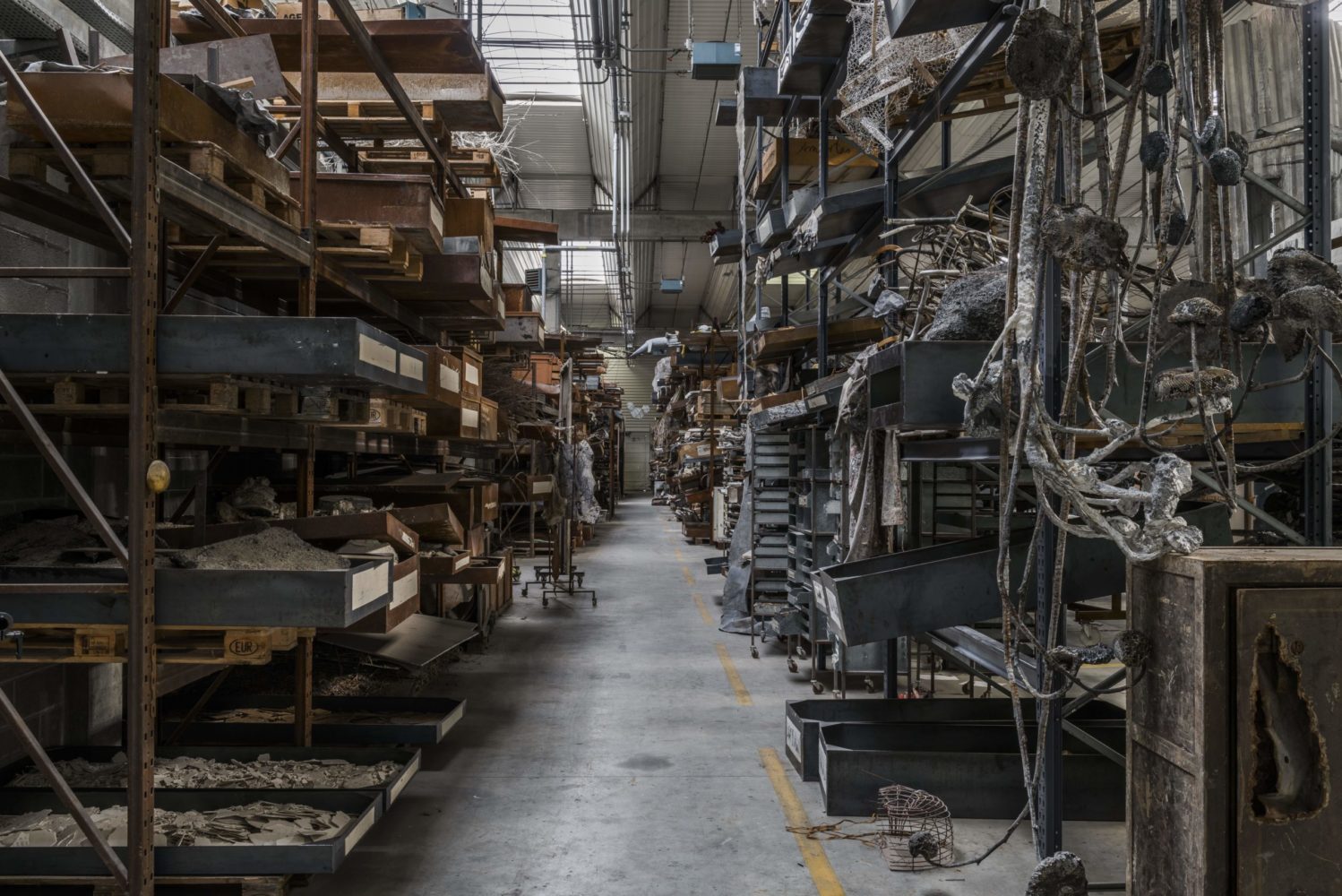
Anselm Kiefer’s “arsenal,” photo by Charles Duprat, © Anselm Kiefer, courtesy of Gagosian.
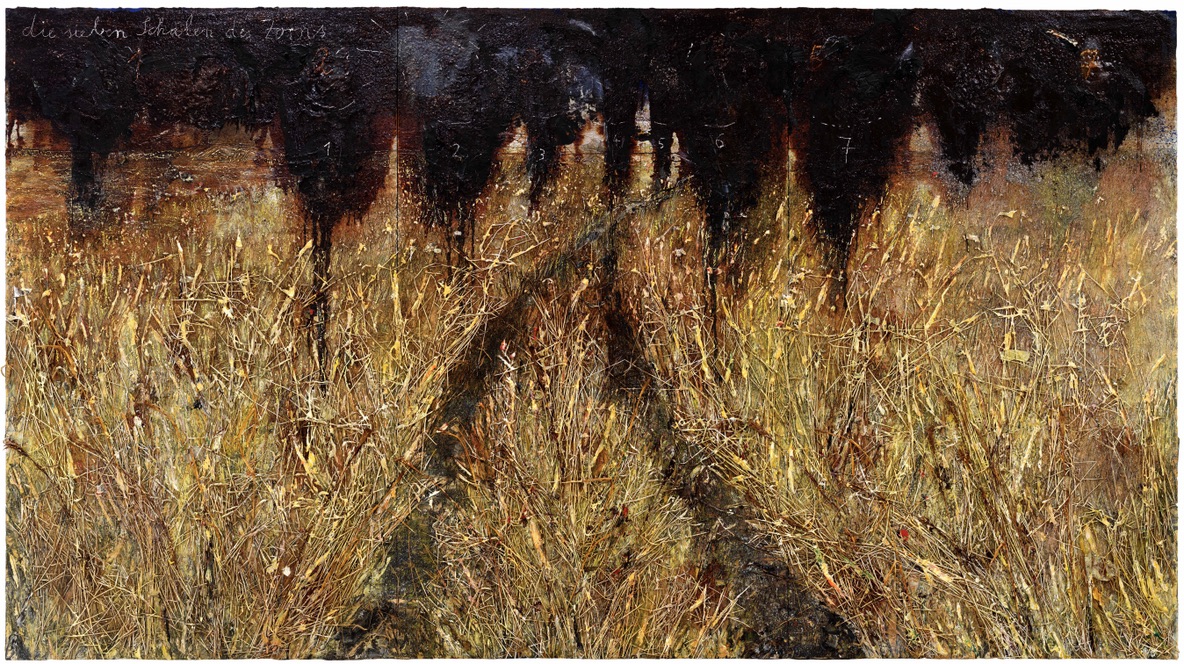
Anselm Kiefer, “die sieben Schalen des Zorns” (The Seven Bowls of Wrath), 2019–2020, emulsion, oil, acrylic, shellac, straw, and gold leaf on canvas, 470 x 840 cm, photo by Georges Poncet, © Anselm Kiefer, courtesy of Gagosian.


